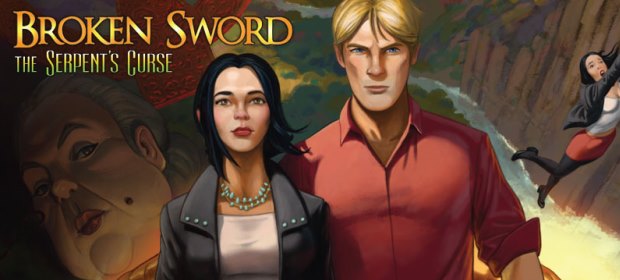A lot has changed in the world of video games since the 90s. Consoles have come and gone, new crazes and genres have swept through the industry and companies like Steam have forever changed the face of games distribution. It has been seventeen years since the first Broken Sword game was released in its big box retail format by long-since disbanded publisher Virgin Games, and despite the many differences in the way that its latest sequel was made – funded by crowd-sourcing via Kickstarter and digitally distributed through Steam by the developers themselves – the game feels very much unchanged.
Familiarity doesn’t necessarily breed contempt – indeed the many backers of the Broken Sword Kickstarter campaign did so on the very promise that the series would be heading back to its two-dimensional, hand-drawn roots. Fans of the series were never taken with the switch to 3D modelled graphics (unfortunately a necessary evil in the late 1990′s and early 2000′s), and were happy to see the fifth game take a step back, in order to take a step forward. And whilst The Serpent’s Curse is bound to appeal to long-time Broken Sword addicts, it fails to live up to its lofty origins.
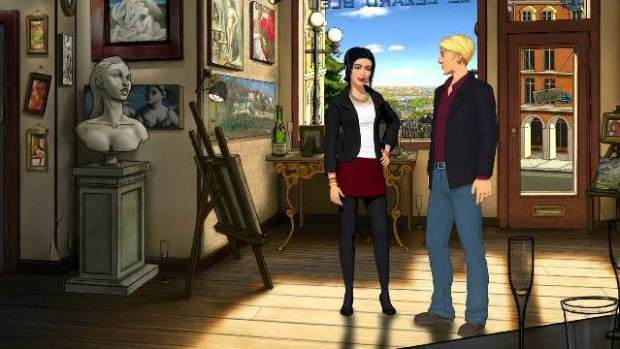
The game begins in much the way that one would imagine: we re-join harmless American tourist-cum-adventurer George Stobbart as he once again finds himself in Paris, this time for an art exhibition. There is a murder, of course, and George and his off-again, on-again French partner Nico become embroiled in a quest for truth, which involves a minor religious sect and a mystical cursed painting. This is almost a by-the-numbers Broken Sword set-up, combining all of the elements that made past iterations so gripping, but somehow not quite managing to follow suit.
Unfortunately, the plot just doesn’t contain the same mystery and suspense that previous entries have oozed with. Even the lesser-appreciated third game had a strong mystical element and quite a lot of tension and danger thrown into the mix. Whilst The Serpent’s Curse certainly attempts to inject these themes, the mystical aspect is firmly relegated behind the murder investigation, and even when George and Nico are in danger, it never seems quite as suspenseful as it is trying to be. There is too much of the mundane in the plot, and too much focus on simply gathering clues and solving the murder, rather than uncovering the secret religious aspects behind the mystery.
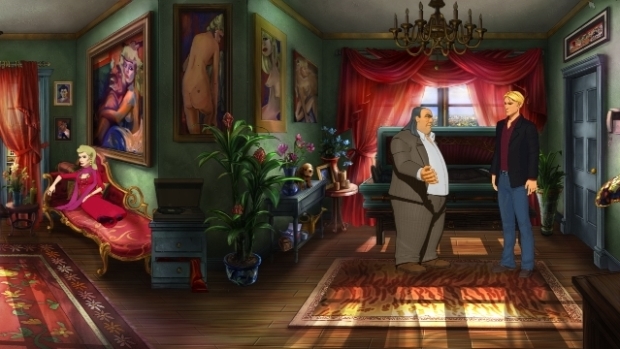
Perhaps the reason that the story never seems to get going, and doesn’t focus on the exciting adventure, is that this is only the first half of the game. The decision to split The Serpent’s Curse into two parts might have been to allow Revolution to release the game sooner, or it might have been for other reasons, but what it ends up doing is truncating a single game, and because of this the first half is fairly inconsequential, in that the drama never really reaches an apex – this is all probably reserved for part two, which is coming early next year.
That is not to say that the game is badly written. In fact, it still contains the same kind of wit and humour that we have come to expect in the series, and the interplay between George and Nico shows that they’re still a highly entertaining double act, even after all these years. The voiceover work is perhaps even better than in past entries. Vocal delivery was often a mixed bag in previous Broken Sword games, but here most of the cast put in believable performances, and help add to the European atmosphere.
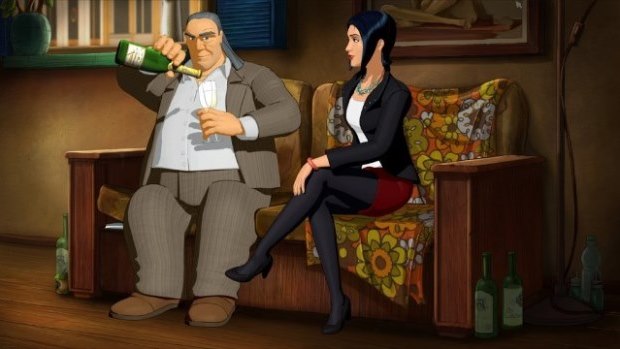
The visuals are also still pretty impressive. Detailed, hand-drawn backgrounds remain a staple of the series, and hark back to parts one and two. These are really evocative and a lot of care has clearly gone into them. Unfortunately, probably for both time and money-saving reasons, the hand-animated sprites have fallen by the wayside. They are replaced by 3D models, albeit shaded to look a little cartoony. They clearly aren’t as expressive or interesting as their old hand-drawn forebears, but they actually still sit fairly well in the scenes – except for those where George comes close to the screen, although these moments are few and far between.
The basic gameplay and puzzling remains much the same as always – and that will both please and frustrate gamers. Those who have always enjoyed the games will find plenty of clever, logical puzzles and lengthy conversations to partake in, but those same lengthy conversations won’t be welcome to players expecting a more action-packed or fast-paced experience. Part one is certainly more text-heavy than puzzle-heavy. Puzzles aren’t all simple, and most are taxing enough to feel satisfying and make sense at least – and even when they don’t, an easy to use hint system is available. The pace is as plodding and considered as it has always been, and speaking with characters is both funny and informative – if you have the patience.
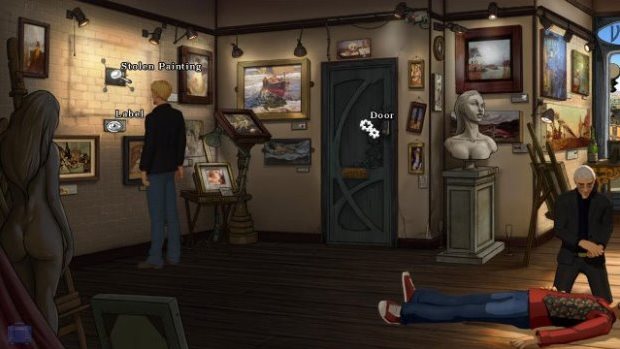
VERDICT: Being broken into two parts only serves to hurt Broken Sword 5. The game was clearly developed as a whole and then chopped up – meaning you are left with all of the exposition in Episode 1, and none of the pay-off. The mystical theme of the series is also somewhat absent, although this will hopefully be remedied in part two. This makes it hard to judge the game at this point. There are plot disappointments, but overall The Serpent’s Curse clearly does a lot that will please series fans, and sets the stage for a stronger second act. There is promise here, but it remains to be seen if it pays off.

DECENT. A 6/10 indicates that, while this game could be much better, it still has a fair amount to offer the player. It might be an interesting title sabotaged by its own ambition, or a game denied greater praise by some questionable design choices. Don’t avoid it outright, but approach it with caution.
Review code provided by publisher.


